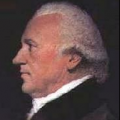
Even though Galileo’s telescope was very small, he was able to see that the faint band of light across the sky, called the Via Lactea, or Milky Way, consisted of huge numbers of stars. But the significance of that band of light was not clear until William Herschel began his obsession with building truly large telescopes. With these instruments Herschel made two major discoveries that had an important bearing on our understanding of the cosmos. First, that we live in a huge collection of stars called the Milky Way, and second that there are a great many “fuzzy patches” called nebulae, some of which consisted of stars, and others of luminous clouds. He did this work at his own residence, known as Observatory House, in Slough, England.
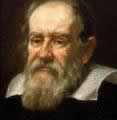 Nearly all cultures have a vision of the cosmos as a whole. The earliest cosmologies of the great civilizations in Egypt, India, Babylonia, and the Americas shared the idea that Earth is flat, and that there are layers above and below. Even today some people have difficulty accepting the idea that they live on a sphere suspended in space—a difficulty that is captured in the story of the scientist and old lady who argued that “It’s turtles all the way down.” Galileo, a professor at the University of Padua, played a central role in changing our vision of the cosmos when he published a little book called The Starry Messenger in 1610.
Nearly all cultures have a vision of the cosmos as a whole. The earliest cosmologies of the great civilizations in Egypt, India, Babylonia, and the Americas shared the idea that Earth is flat, and that there are layers above and below. Even today some people have difficulty accepting the idea that they live on a sphere suspended in space—a difficulty that is captured in the story of the scientist and old lady who argued that “It’s turtles all the way down.” Galileo, a professor at the University of Padua, played a central role in changing our vision of the cosmos when he published a little book called The Starry Messenger in 1610.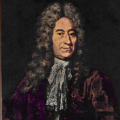 Light travels so amazingly fast that it was very difficult to measure its speed. The first person to succeed was Danish astronomer Ole Christensen Rømer. His accomplishment was an essential step in developing an understanding of the universe. Eventually it would figure in the development of Einstein’s theory of relativity, but the speed of light also defines the light year, which is the yardstick that astronomers use to measure the vast distances between stars and galaxies.
Light travels so amazingly fast that it was very difficult to measure its speed. The first person to succeed was Danish astronomer Ole Christensen Rømer. His accomplishment was an essential step in developing an understanding of the universe. Eventually it would figure in the development of Einstein’s theory of relativity, but the speed of light also defines the light year, which is the yardstick that astronomers use to measure the vast distances between stars and galaxies.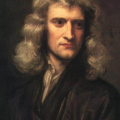 Although each of the scientists featured on this website made important contributions to cosmology, a special place in the history of science is reserved for Isaac Newton, a professor at Trinity College, Cambridge University, as the first person to realize that the physical laws that govern our lives on Earth are the same as those that govern the stars and planets. In a very important sense, Newton’s insights and mathematical abilities opened people’s eyes to the recognition that we are part of a broader universe, accessible not only by what we can see with our eyes, but also by what we can envision with creative ideas checked by the rigor of mathematics.
Although each of the scientists featured on this website made important contributions to cosmology, a special place in the history of science is reserved for Isaac Newton, a professor at Trinity College, Cambridge University, as the first person to realize that the physical laws that govern our lives on Earth are the same as those that govern the stars and planets. In a very important sense, Newton’s insights and mathematical abilities opened people’s eyes to the recognition that we are part of a broader universe, accessible not only by what we can see with our eyes, but also by what we can envision with creative ideas checked by the rigor of mathematics.
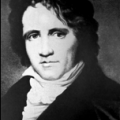 The idea that Earth goes around the Sun, rather than the other way around, was proposed in 1543 by Nicholas Copernicus, but it was not confirmed by solid evidence for nearly 300 years. While other astronomers were working on the problem, the honor of being the first to publish an accurate distance to a star is usually credited to Friedrich Wilhelm Bessel, Director of Königsberg Observatory in Prussia, (now Kaliningrad, Russia) who worked on the problem for 28 years, using the finest telescopes then available.
The idea that Earth goes around the Sun, rather than the other way around, was proposed in 1543 by Nicholas Copernicus, but it was not confirmed by solid evidence for nearly 300 years. While other astronomers were working on the problem, the honor of being the first to publish an accurate distance to a star is usually credited to Friedrich Wilhelm Bessel, Director of Königsberg Observatory in Prussia, (now Kaliningrad, Russia) who worked on the problem for 28 years, using the finest telescopes then available.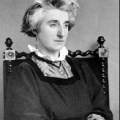 Once Bessel and others were able to measure the distance to a star early in the 19th century it was possible to determine its brightness compared with the Sun. As many astronomers suspected, stars were not the tiny dots of light that ancient peoples thought them to be, but were almost certainly distant suns whose light was reduced only because they were at such a vast distance. But it was still not possible to compare the composition of the stars with the composition of the Sun, and consequently show for certain that they were indeed made of the same stuff. The task of making that final connection, and laying the foundation for modern spectroscopy was accomplished by William and Margaret Huggins, who worked in their own private observatory at 90 Upper Tulse Hill, South London.
Once Bessel and others were able to measure the distance to a star early in the 19th century it was possible to determine its brightness compared with the Sun. As many astronomers suspected, stars were not the tiny dots of light that ancient peoples thought them to be, but were almost certainly distant suns whose light was reduced only because they were at such a vast distance. But it was still not possible to compare the composition of the stars with the composition of the Sun, and consequently show for certain that they were indeed made of the same stuff. The task of making that final connection, and laying the foundation for modern spectroscopy was accomplished by William and Margaret Huggins, who worked in their own private observatory at 90 Upper Tulse Hill, South London.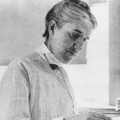
 Albert Einstein is widely celebrated as one of the most brilliant scientists who ever lived. His fame was due to his original and creative theories that at first seemed crazy, but that later turned out to represent the actual physical world. Nonetheless, when he applied his theory of general relativity to the universe as a whole in a paper published in 1917, while serving as Director of the Kaiser Wilhelm Institute for Physics and professor at the University of Berlin, Einstein suggested the notion of a "cosmological constant". He discarded this notion when it had been established that the universe was indeed expanding. His contributions to physics made it possible to envision how the universe evolved.
Albert Einstein is widely celebrated as one of the most brilliant scientists who ever lived. His fame was due to his original and creative theories that at first seemed crazy, but that later turned out to represent the actual physical world. Nonetheless, when he applied his theory of general relativity to the universe as a whole in a paper published in 1917, while serving as Director of the Kaiser Wilhelm Institute for Physics and professor at the University of Berlin, Einstein suggested the notion of a "cosmological constant". He discarded this notion when it had been established that the universe was indeed expanding. His contributions to physics made it possible to envision how the universe evolved.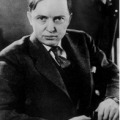 When Harlow Shapley began to study large groups of stars called globular clusters in 1914, very little was known about the overall shape of our galaxy or our place in it. By the time he finished his research in 1919, after publishing more than 40 research papers, the overall shape of our galaxy was coming into focus, including the position of our own solar system. Shapley’s discovery of our place in the galaxy was a remarkable achievement, comparable to discovering that the Earth orbits the Sun.
When Harlow Shapley began to study large groups of stars called globular clusters in 1914, very little was known about the overall shape of our galaxy or our place in it. By the time he finished his research in 1919, after publishing more than 40 research papers, the overall shape of our galaxy was coming into focus, including the position of our own solar system. Shapley’s discovery of our place in the galaxy was a remarkable achievement, comparable to discovering that the Earth orbits the Sun. When Edwin Hubble was hired to work at Mount Wilson Observatory in 1919 (part of the Observatories of the Carnegie Institution of Washington) as a junior astronomer, the most pressing question of the day concerned the nature of the cloudy patches called nebulae. Most of Hubble’s colleagues at Mount Wilson thought they were all in the Milky Way, but he was not so sure. He succeeded in answering this question by taking the best possible photos of these objects, providing convincing evidence that at least some of them were well beyond the Milky Way. By discovering other galaxies Hubble expanded the known universe 100-fold. But he didn’t stop there. By measuring the distances and motions of the galaxies he surprised everyone, including Einstein, by discovering that the universe is expanding.
When Edwin Hubble was hired to work at Mount Wilson Observatory in 1919 (part of the Observatories of the Carnegie Institution of Washington) as a junior astronomer, the most pressing question of the day concerned the nature of the cloudy patches called nebulae. Most of Hubble’s colleagues at Mount Wilson thought they were all in the Milky Way, but he was not so sure. He succeeded in answering this question by taking the best possible photos of these objects, providing convincing evidence that at least some of them were well beyond the Milky Way. By discovering other galaxies Hubble expanded the known universe 100-fold. But he didn’t stop there. By measuring the distances and motions of the galaxies he surprised everyone, including Einstein, by discovering that the universe is expanding.